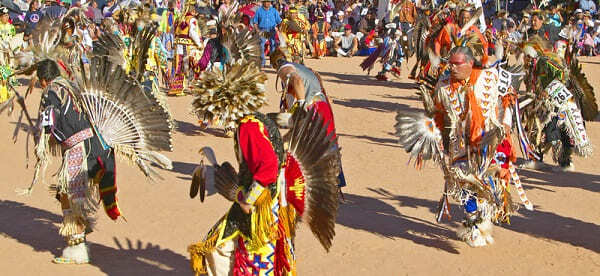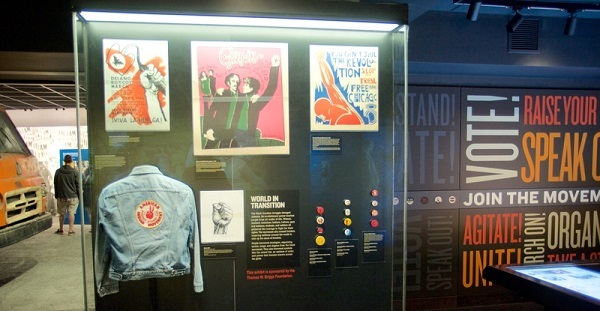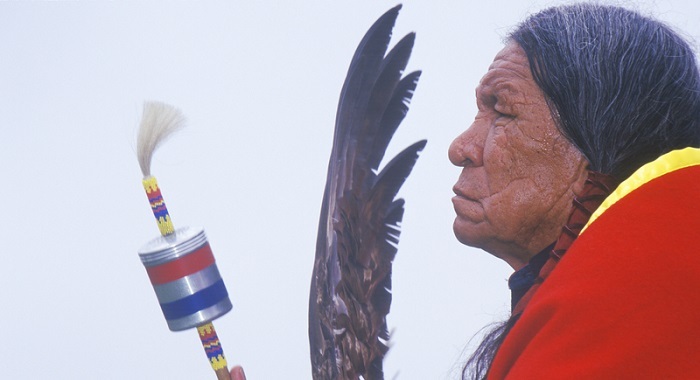

The natives in America have had a long history of subjugation and discrimination. But one must also refer to their society, culture, resistance movements, and participation in political and social aspects. At first contact with the European immigrants, the native seemed too different from the post-industrial world. The differences in cultures resulted in shifting the alliances between the two and moving towards political tension, ethnic violence, and social disruption. Natives were sidelined throughout the history of the United States.

According to anthropologists and archaeologists, the natives first came to America via migration from Eurasia to the Americas. The theory suggests that they would have migrated about 12,000-15,000 years ago through the Bering Strait. This process of migration, leading to population, cultural, and agricultural transfer between the Old World and the New World, is known as the Columbian exchange.
The 17th century saw the Metacom War, which was the last armed rebellion by the natives of southern New England. The next century saw the great American Revolution, which ceded vast territories of the Native Americans to the United States. Several attempts were made to acquire the native’s land. Then, the 19th century saw the American expansion via the Westward expansion.
The major event witnessed by the natives in the 19th century was the Civil War where natives had to fight for either Union or the Confederate side. The Indian Removal Act was a feature of this century, and so was the Trail of Tears. Attempts were made to extend citizenship to some tribes. Finally, in the 20th century, Indian Citizenship Act was passed.
There were about 345,000 Native Americans as counted by the census of 1880. The population distribution of the Native Americans was interesting. 78% of the natives were barred from the reservation. They were living outside the reservation.
Reports suggest that the biggest tribe in America was the Navajo tribe in terms of the number of full-blood individuals.
The United States has roughly 573 tribal governments recognized by the federal. With these, the tribes were now given the right to form their governments and enforce civil and criminal laws, taxes, etc. However, these were given only if the tribe met certain conditions.
The Civil Rights movement emerged as one of the most crucial parts of American history. It was for Native Americans as well as Blacks. Devastated by the Jim Crow Laws which had institutionalized economic, educational, and social disadvantages for Native Americans, segregation in the Deep South, irked the Native Americans.
Movements like the Brown v. Board of Education inspired natives to join the Civil Rights Movement. The Civil Rights Movement was headed by the National Association for the Advancement of Coloured People (NAACP).

American Indian Movement-Civil Rights Movement
Description-American Indian Movement, (AIM), a militant American Indian civil rights organization, founded in Minneapolis, Minnesota, in 1968 by Dennis Banks
Societal discrimination and racism: Native Americans continue to face prejudice and inequality in contemporary times.
Mascot Controversy: The issue first surfaced in the 1960s. Native Americans are used as mascots in sports, and this directs to the perpetuating stereotypes in U.S. and Canada.
Depiction in Art: In the film industry, Natives are usually relegated to subordinate roles.
Terminology differences: The term 'American' was not in use for European Americans until the mid-18th century. American Indians were the original term, however, as European settlers began using the term American, Indians became the word for the natives.
Economic barriers: There have been serious attempts of keeping natives away from the main economic centres of the U.S.
Historical and intergenerational trauma: The trail of Tears was one of the most devastating parts of Native history. Years of discrimination have had psychological impacts as well.
There were various cultural areas in Pre-Columbian North America. These cultural areas shared certain features and traits. European colonization had a great impact on the cultures of the Native Americans. It was in material as well as social terms. In the case of language, there was a shift to English. English language too took terms from the indigenous languages of the Natives. Dietary habits were changed with a shift in their daily activities and the environment.

Native American Cherokee elder
Description-The Cherokee Nation is a sovereign tribal government.
White Indians is the term used for the Europeans living among the Native Americans. Marriages, friendship, and economic exchange were common among Europeans and Natives. Indigenous labour made a great labour force for the Europeans until the arrival of the African slaves. As for the relations between the African and Native populations, they resented each other initially for economic reasons. Both of these were considered inferior races by the Europeans.
Intertribal mixing is a feature of many Native tribes before European contact. For this reason, about 3 million indicated their identity as that of Native Americans in the 2010 census. The tribe services are given only to individuals who are federally recognized tribes. Many people in America identify with more than one race. The genetic pattern of the indigenous Americans suggests two experiences, the first being the initial-peopling of the Americans and; the second, the colonization.
Natives in America had to face grave issues since the colonization. However, the picture was not all dread to some, and they enjoyed the initial European contact to some extent. The history of the Natives in America is gloomy for it is entrenched in the history of inequality, discrimination, and racism in America. European exploration in 1492 changed the course of social formations in the Americas.
Q1. Did Natives have a language?
Ans. There were about 500 languages spoken by different Native Tribes in North America. Some of them persist today. For example, the Navajo Language had about 170,000 speakers today.
Q2. What did the Natives wear?
Ans. The costumes of the Native Americans consisted of hides of animals hunted by them for food. Deerskin was famous among the Cherokees and the Iroquois.
Q3. Which is the largest Native Tribe?
Ans. The Cherokee tribe is the most popular and largest in North America. They have about 4 million members. Second is the Navajo Tribe.